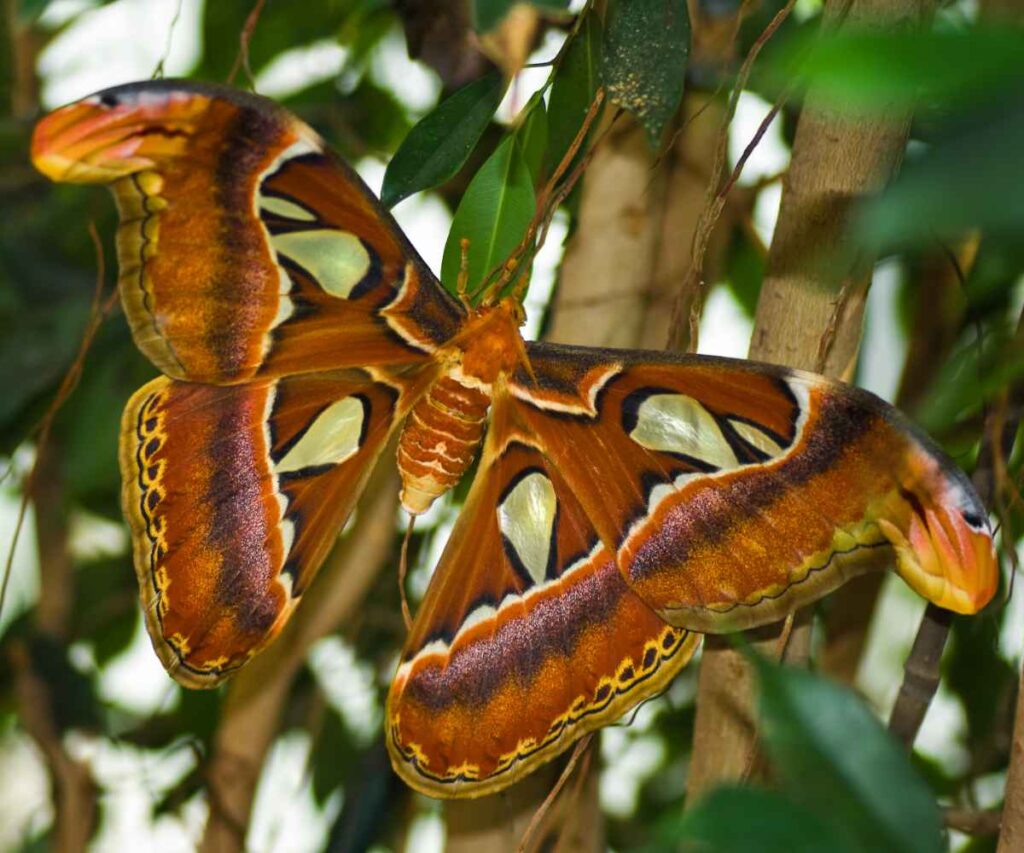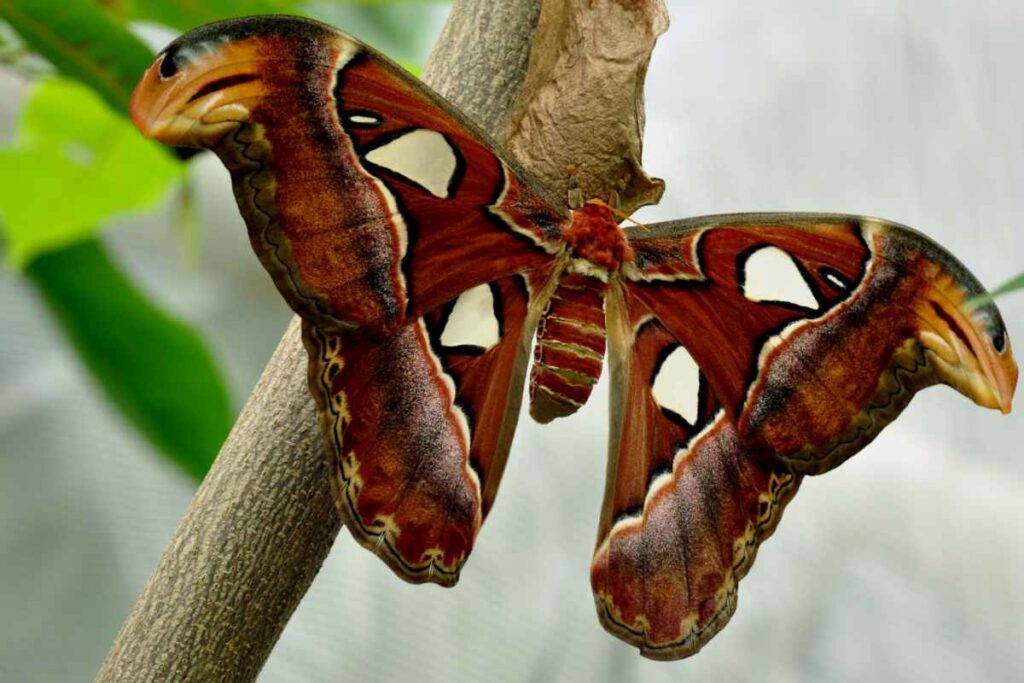Last Reviewed and Updated on January 18, 2023
The Atlas moth is one of the largest insects in the world; its wings stretch wider than the average human hand. These gorgeous moths are endemic to the forests of Asia and are very easy to recognize due to their colorful wing markings (and size). Read on and learn more about this species and some of the most interesting facts about the Atlas moth.

What is an Atlas moth? Some basic information
Atlas moths are a large moth species endemic to the forest of Asia. Its habitat primarily includes dry tropical forests, secondary forests, and shrub-lands in South Asia, East Asia, Southeastern Asia, and Borneo island.
They are one of the largest insects; their wingspan measures up to 9.4 inches / 24 cm.
As is with other members of the moth and butterflies (order Lepidoptera), the Atlas moth has a few stages in its life cycle and goes through metamorphosis.
The cycle starts with the egg. A larva emerges and, with a lot of feeding on leaves, grows into a caterpillar. After a caterpillar reaches a specific size, it is ready to pupate. After a while, an adult Atlas moth emerges from the pupa, ready to mate and start a new generation of moths.
Atlas moths are cultivated for silk in Asia,
Facts about the Atlas Moth
You now know some basic information about these moths and what makes them similar to other moths and butterflies. Read on to learn some of the most fascinating facts about the Atlas moth and what sets it apart from many other moths and butterflies.
1. They don’t eat in the moth stage of their life cycle
Adult Atlas moths don’t consume food; they don’t even have fully developed mouthparts. Once they emerge from their cocoon as adult moths, they only live for a couple of days, and their only purpose in this stage of their life is to find a mate and reproduce.
The adult moth relies on fat storage from its previous stages in life.
2. They got their name from Greek mythology
Atlas moths are named after a Titan of the Greek mythology Atlas. According to mythology, Atlas is a Titan condemned to hold up the heavens or sky for eternity.
3. Females are larger than males, but males have larger antennae
Female Atlas moths are noticeably larger and heavier than males. The males, however, have broader antennae than females do.
4. They avoid flying to conserve energy
As they don’t eat in their adult stage, they have no way to replenish the energy they lose when flying; every flight shortens their already short lifespan.
Females usually don’t fly; they wait for their mates to find them.
5. Only one moth has a larger wing surface area than the Atlas moth
Atlas moths have a wing surface area of about 25 square inches (160 square centimeters), and only the White witch moth surpasses them.
6. Its wing resembles a snake’s head

The upper corner of their wings resembles the head of a snake. The resemblance is good enough to scare away some potential predators.
7. Caterpillars can spray liquid at their predators
Atlas moth caterpillars are rather large. They are still attractive prey to unsuspecting predators but have good defense mechanisms; they can spray odorous, irritating secretions at their attackers.
